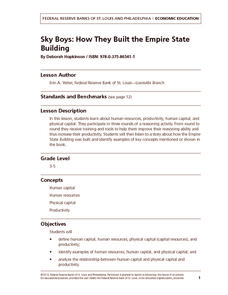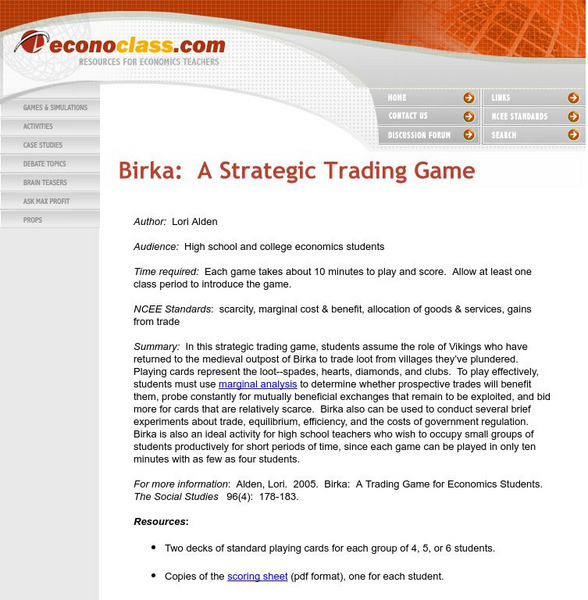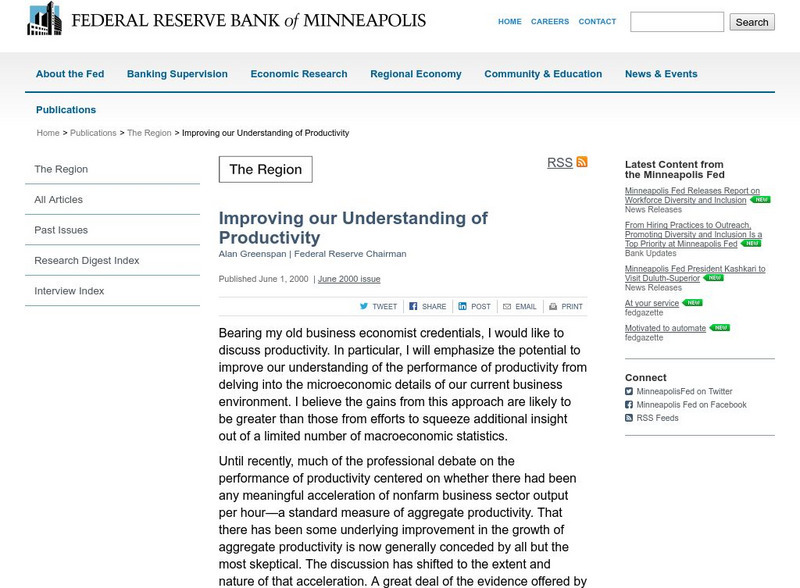Federal Reserve Bank
Sky Boys: How They Built the Empire State Building
How tall is the Empire State Building? Lead your class through a collaborative estimation activity to determine the number of quarters it would take to reach the top and teach the following concepts: human capital, human resources,...
Texas Education Agency (TEA)
Maintaining Your Health and Well-Being
Future counselors and mental health professionals engage in two activities that give them insight into careers in human services. First, groups of four compare and contrast health and wellness apps and share their findings with...
Council for Economic Education
The Neolithic Agricultural Revolution
What effect could one person's invention have on the human race? In the case of the Neolithic Agricultural Revolution, small improvements in farming methods led to increased food production. The human population began to boom, leading us...
Council for Economic Education
Athens and Sparta-Imagine the Possibilities
Both Athens and Sparta made choices to survive in ancient Greece. Those choices were, in essence, economic ones about how to direct resources. A Venn diagram activity and reading ask class members to examine the connection between...
Council for Economic Education
Specialization and the Decathlon
Michael Phelps, the economist? Scholars research the economic advantages of specializing in one kind of service, and how it relates to athletes doing the same in their respective sports. They evaluate absolute advantage, production, and...
Nature Works Everywhere
Fishing for a Future
Teaching a man to fish has an environmental impact. Through a series of four lessons, learners study the science of fishery management. Their study involves analyzing data to develop a management strategy for specific fish and common...
Massachusetts Institute of Technology
Mit: Open Course Ware: Ecology: Communities and Ecosystems
This is a collection of courses on communities and ecosystems. Some topics explored are productivity, food webs, and ecology. The courses offer video clips, lecture notes, practice problems, and exam questions. Practice problems and exam...
US Department of Labor
Bureau of Labor Statistics: Productivity and Costs
This site provides statistics for manufacturing and productivity in the USA in various economic sectors.
University of Colorado
University of Colorado: Principles of Microeconomics: Production and Costs
High-level site provides a definition and a numerical example for total product. You need to scroll down to the large chart to find this information.
TED Talks
Ted: Ted Ed: The Happy Secret to Better Work
We believe that we should work to be happy, but could that be backwards? In this fast-moving and entertaining talk, psychologist Shawn Achor argues that actually happiness inspires productivity. [12:20]
Other
Amos Web: Pumping Up the Economic Growth
What is economic growth? This site not only gives a definition, but also provides a great overview of various characteristics of how economies can grow. Discusses different types of resources, possible negative effects of growth, and...
Econoclass
Econoclass: Birka: A Strategic Trading Game
This game, using multiple decks of playing cards, teaches the concepts of marginal benefits vs. total benefits. Each game takes about 10 minutes to play.
Other
Superior Software for Windows: Rules to Better Email
A complete list of email rules which can help people learn how to send more effective emails and manage their inboxes.
Federal Reserve Bank
Federal Reserve Bank of Minneapolis: Improving Our Understanding of Productivity
An article that will help you understand productivity. The article discusses ways to improve it as well as why it is important.
Council for Economic Education
Econ Ed Link: National Council of Economic Education: Capital Chips
This site has a multi-part lesson that explores several aspects of productivity. The site incorporates online resources and activities.
Council for Economic Education
Econ Ed Link: The Right Job for the Tortoise and the Hare
This entertaining lesson teaches your primary students about the value of specialized labor within a community, via The Tortoise and The Hare. This classic story also reinforces character education values of respect and friendship....
Council for Economic Education
Econ Ed Link: Capital Chips (Part 3)
Through the use of a historical timeline of the capital investments made by the company the resulting benefits will be examined. The benefits from the capital investments of Herr Foods, Inc. will be related to their effect on the...
Council for Economic Education
Econ Ed Link: Capital Chips (Part 2)
Through the use of a historical timeline of the capital investments made by the company the resulting benefits will be examined. The benefits from the capital investments of Herr Foods, Inc. will be related to their effect on the...
Council for Economic Education
Econ Ed Link: Capital Chips (Part 1)
Through the use of a historical timeline of the capital investments made by the company the resulting benefits will be examined. The benefits from the capital investments of Herr Foods, Inc. will be related to their effect on the...
Council for Economic Education
Econ Ed Link: A Fair Wage
Income for most people is determined by the market value of the productive resources they sell. What workers earn depends, primarily, on the market value of what they produce and how productive they are.
Council for Economic Education
Econ Ed Link: Dog Gone Job!
Dog Gone Job! demonstrates how job specialization increases productivity.
Council for Economic Education
Econ Ed Link: Technology Video and Quiz
Economics website for students presents information on technology, productivity and resources.
Council for Economic Education
Econ Ed Link: Productivity Video and Quiz
This video teaches the concept of Productivity, which is measured as the quantity of output per unit of input. Watch the brief video and take the interactive quiz to assess what you have learned. [1.47]
Federal Reserve Bank
Federal Reserve Bank of Philadelphia: Ten Mile Day [Pdf]
Using the book, Ten Mile Day, by Mary Ann Fraser, this lesson helps children understand division of labor, competition, and incentives in the workplace.














